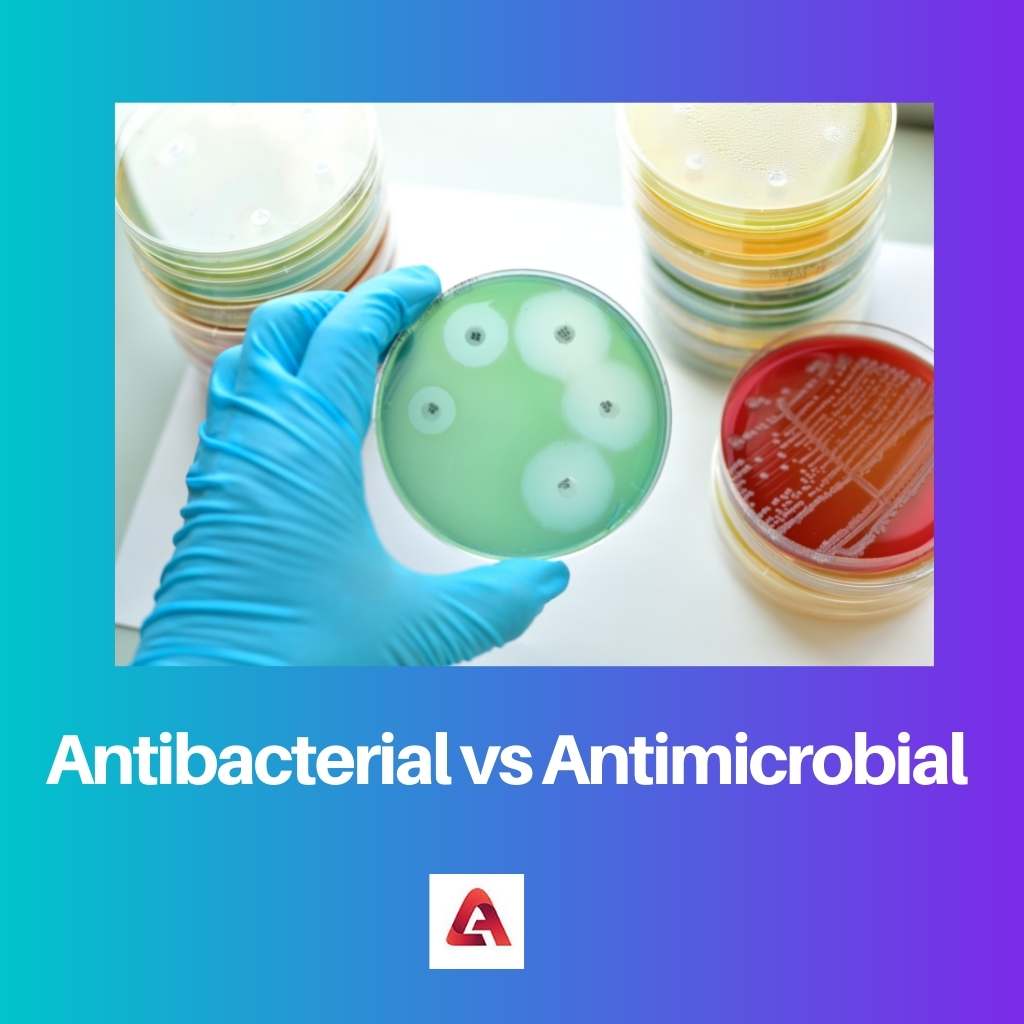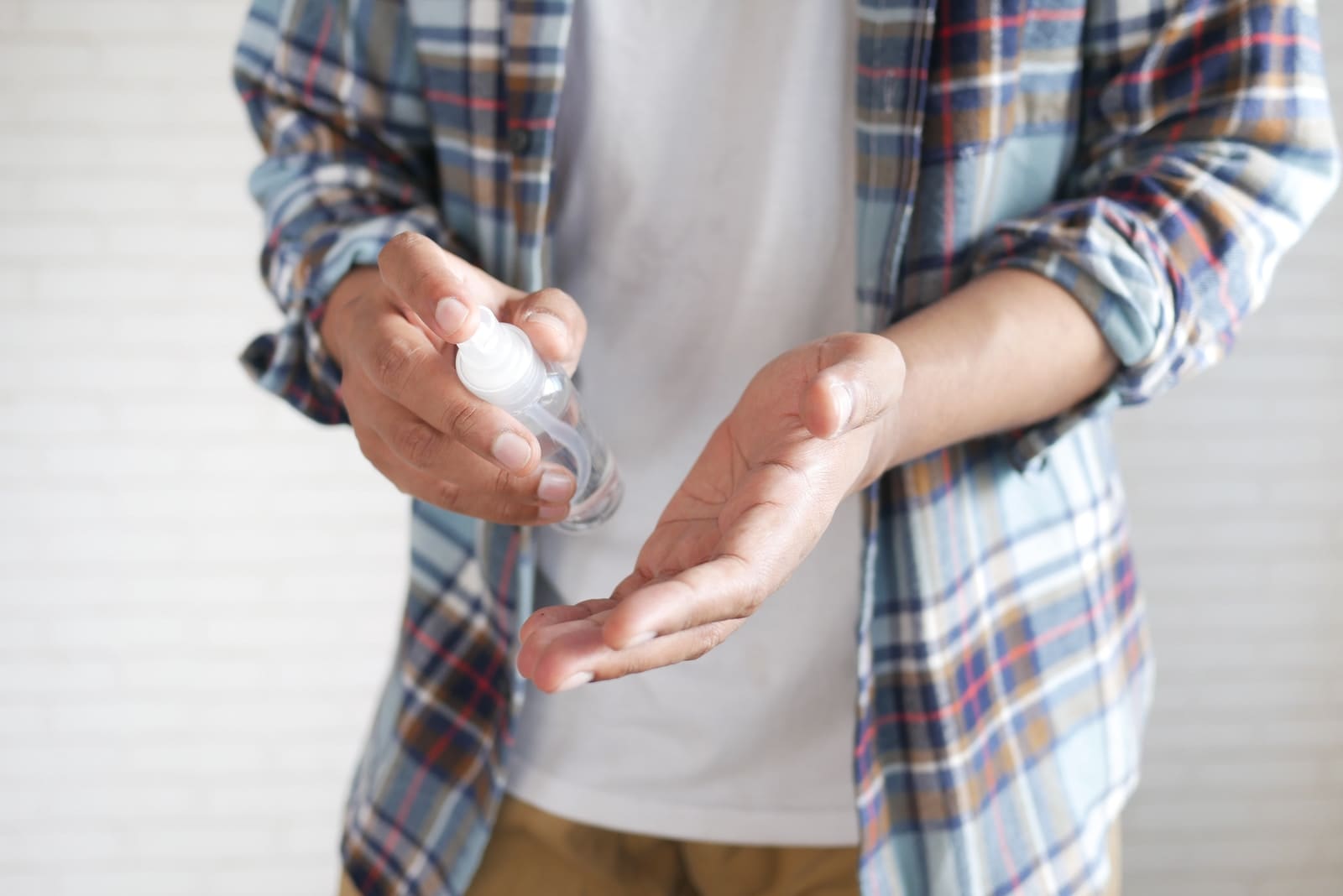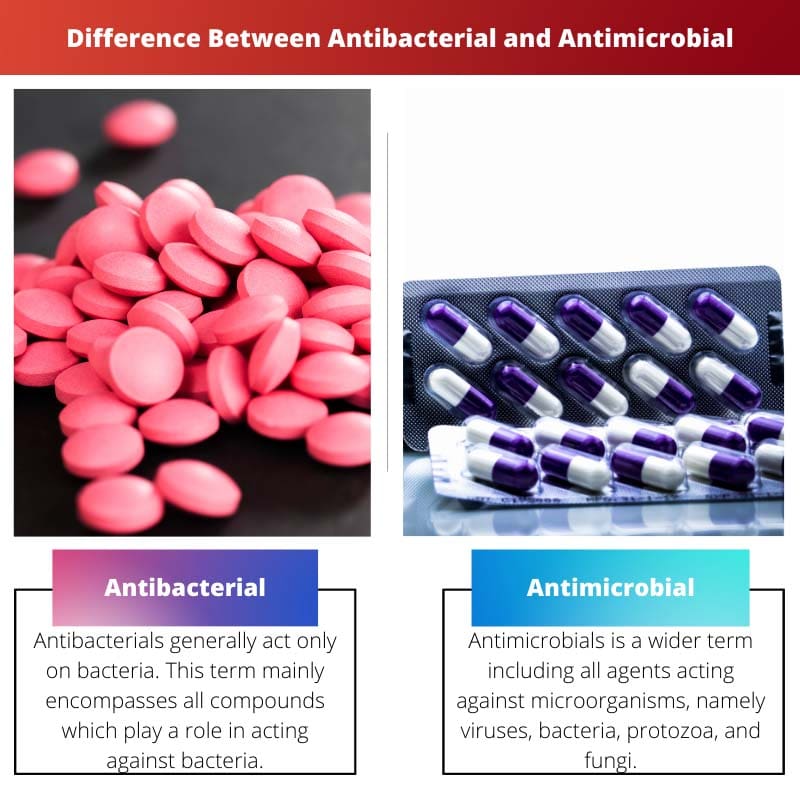Across the world, there are several great rivalries, such as Rocky Balboa vs Apollo Creed, food trucks vs Chevy trucks, The Green Bay Packers vs The Chicago Bears, and many more.
When it comes to the germ-fighting game, antibacterial and antimicrobial are two of them. Nowadays, the No. 1 feud going is the performance battle between the two of them.
Antibacterial and antimicrobial are two of the strong flu and cold fighters. They deliver instant eradication of influenza and cold building blocks. Sometimes, both terms are used interchangeably, which is completely wrong.
This article highlights the difference between antibacterial and antimicrobial.
Key Takeaways
- Antibacterial agents target and kill bacteria specifically, while antimicrobial agents are effective against a broader range of microorganisms, including bacteria, fungi, and viruses.
- Antibacterial products are more limited in their scope of use, whereas antimicrobial products offer broader protection.
- Overuse of antibacterial agents can contribute to antibiotic resistance, while antimicrobial agents may help slow down resistance development.
Antibacterial vs Antimicrobial
The difference between antibacterial substances and antimicrobial substances is that antibacterial is only effective against bacteria.
On the flip side, antimicrobial substances work as a broad range of microbes, including mildew, bacterial, algae, mould, and even viruses.

Antibacterials act only on bacteria. This term mainly encompasses all compounds which play a role in acting against bacteria.
Nowadays, this term is sometimes used for disinfectant types that are not used as medicine, for instance, triclosan or alcohol.
Antimicrobials is a wider term including all agents acting against microorganisms, namely viruses, bacteria, protozoa, and fungi. The chief class of antimicrobial mediums is disinfectants.
It aims to kill a range of microbes on surfaces of non-living to prevent the spread of illness.
Comparison Table
| Parameters of Comparison | Antibacterial | Antimicrobial |
|---|---|---|
| Interpretation | It is a drug used to treat bacterial infections. | It is a drug used to cure a microbial infection. |
| Active ingredients | Silver | Silver or zinc |
| Product | Detergents and soap | Hand sanitizers |
| Types | Chemotherapeutics and antibiotics | Antimycotic agents, antivirals, disinfectants, antiseptics, some essential oils, etc. |
| Examples | Macrolides, amphenicols, penicillins, carbapenems, quinolones, etc. | Rimantadine, ketoconazole, oseltamivir, fluconazole, amantadine, etc. |
What is Antibacterial?
Antibacterial works as a medium that destroys fungi and bacteria. It also suppresses their ability to reproduce or grow. The agents include chemotherapeutics and antibiotics. Chemotherapeutics are produced synthetically.
With the help of various mechanisms, bacteria can develop resistance to some of the medications. Due to the mutations of certain genes, its resistance automatically increases.
As a result of injudicious and widespread use of antibacterial led to the increasing emergence of pathogens of antibiotic resistance.
Different preparations of antibacterial have different action mechanisms. For instance, the penicillin group binds to a particular structure in the bacteria and activates enzymes in their walls, leading to self-destruction.
Polymyxins destroy the bacterial membrane’s permeability.
Tetracyclines are also one of them, suppressing some protein synthesis stages present in microorganisms. It can then lead to the cessation of its propagation. Gram-negative bacteria, they act destructively.
Examples of the anti-bacterial medium are amphenicols, macrolides, quinolones, glycopeptides, antibiotics, and many more.

What is Antimicrobial?
Antimicrobial works as a medium that destroys microorganisms and suppresses their reproduction ability. Its agents are used to prevent or treat infectious diseases of different etiology.
Among the preparations, they are a large group and subdivided according to the type of action.
Depending on the properties of the antimicrobial agents, they can be divided into two groups. The first one consists of preparation that helps to kill the microbes like fungicides, bactericides, and virucides.
The second group comprises of preparation suppressing their multiplication and growth like virostatics, bacteriostatic, and fungistatic.
Some antimicrobial agents last for a lifetime, like antiretroviral drugs used in AIDS. Others are administered once, such as helminthiasis. Or which requires intake for a long time in bacterial infections.
Several essential oils have antimicrobial effects, such as clove, thyme, and cinnamon oil. They are rich in secondary metabolites and terpenoid substances.
When it comes to ozone, they also have antimicrobial activity as it is used to purify air and water. In medicine, ozone therapy is used in neoplastic, autoimmune, inflammatory, and infectious diseases.
Antimicrobial effects include physical methods such as the use of dry heat sterilization and radiation.
Main Differences Between Antibacterial and Antimicrobial
- Antibacterial is an agent that aims to destroy fungi and bacteria and suppress their ability to reproduce or their growth. On the flip side, the antimicrobial is an agent that destroys microorganisms and suppresses their growth.
- When it comes to usage, antibacterial is used in infections with mycotic or bacterial aetiology. Antimicrobials are used for the treatment of viral, fungal, parasitic, and bacterial diseases for skin disinfection, clotting, medical instruments, etc.
- Product with surface anodizing with a finish containing calcium phosphate and polymer coating containing glory chlorhexidine works as an antibacterial agent. But products manufactured with the finishing of copper and certain polymers work as antimicrobial agents.
- Antibacterial has a lesser scope of protection compared to antimicrobials. Antibacterial hand wipes or soap fails to compete with plain soap and water to wash hands which might provide greater protection from flu and cold.
- The antibacterial substances are only effective against bacteria. On the other hand, Anti-microbial substances work as a broad range of microbes, including mildew, bacteria, algae, mould, and even viruses.

- https://www.asmscience.org/content/book/10.1128/9781555816728.chap65
- https://www.bmj.com/content/317/7159/609.short

The article presents a comprehensive comparison between antibacterial and antimicrobial products, explaining the key differences in detail.
Your comment is accurate and summarizes the content of the article well.
The references provided in the article demonstrate a strong basis for the information presented, reinforcing the credibility of the content.
The comparison table included in the article effectively captures the distinctions between antibacterial and antimicrobial products, making it easier for readers to understand.
The examples of antibacterial and antimicrobial products serve as practical references to better comprehend their applications and purposes.
I agree, the real-world examples are crucial for grasping the practical implications of the differences between antibacterial and antimicrobial substances.
The article effectively addresses the issue of antibiotic resistance and highlights the impact of overusing antibacterial agents in contributing to this problem.
The different examples provided for both antibacterial and antimicrobial products help illustrate the contrast between the two.
I appreciate the breakdown of the action mechanisms for antibacterial and antimicrobial products, shedding light on their specific functions.
The detailed explanation of how antimicrobial agents can be subdivided based on their type of action enhances the depth of information provided.